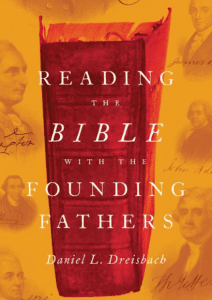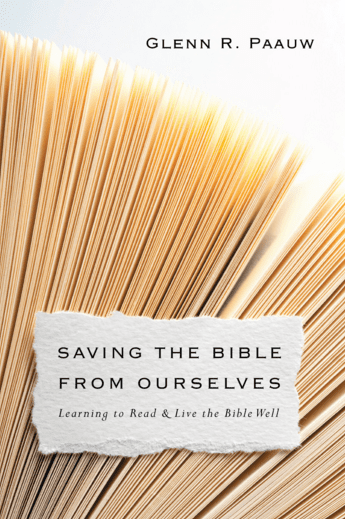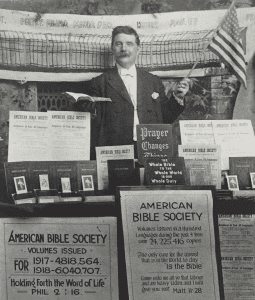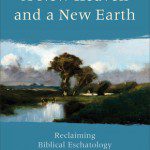 Part One (Ch 1-4) of the new book by Peter Enns, The Evolution of Adam: What the Bible Does and Doesn’t Say about Human Origins, discusses Genesis as an ancient story of Israel’s self-definition. Chapter 4, Israel and Primordial Time, sums up the discussion of Genesis and the Old Testament and moves on to consider specifically the story of Adam in Genesis 2-4. Enns argues that the OT is a story of Yahweh, the God of Israel, as creator and redeemer and that the story of Adam serves as a foundation for this story of Israel. In this post we will look at both of these arguments.
Part One (Ch 1-4) of the new book by Peter Enns, The Evolution of Adam: What the Bible Does and Doesn’t Say about Human Origins, discusses Genesis as an ancient story of Israel’s self-definition. Chapter 4, Israel and Primordial Time, sums up the discussion of Genesis and the Old Testament and moves on to consider specifically the story of Adam in Genesis 2-4. Enns argues that the OT is a story of Yahweh, the God of Israel, as creator and redeemer and that the story of Adam serves as a foundation for this story of Israel. In this post we will look at both of these arguments.
Yaweh is Creator and Redeemer. The creation narratives in the Old Testament are not merely stories of origins. Rather they are theological statements that declare that Israel’s God is supreme, victorious over all. The Old Testament is filled with allusions to various ANE myths and stories. This was, after all, the cultural context of both the authors and the original audience. The allusions are especially prominent in the Psalms. The Lord God tamed the waters into submission, subdued and ordered the chaos, cut the Red Sea to pieces, crushed the heads of Leviathan, laid the foundations of the earth. This same God led his people out of Egypt and established David’s line “forever … through all generations.”
Speaking into the context of Israel in exile and post-exile the scriptures attest to the power and ultimate victory of God.
Israel’s God is (1) the one responsible for the created order and (2) still acting in the here and now to save his people. Yahweh, in other words, is creator and redeemer, and creation and redemption are not two separate acts; the latter is an instantiation of the former. That Yahweh was Israel’s creator and redeemer is what made him stand out among the crowd of less worthy gods, why their God alone was truly worthy of worship. (p. 65)
The theological message of the Old Testament speaks to the power and majesty of God and to his work as Israel’s redeemer. This sets the foundation for our understanding of the work of Jesus as God’s Messiah. Enns suggests that to read all of the cultural allusions at work in the Old Testament as literal will unavoidably misunderstand the theology at work. Our modern cultural context is very different.
Do you think that Yahweh as creator an redeemer is a good summary of the message of the Old Testament?
Is it reasonable to suppose that the original authors used ancient ideas about origins to convey ideas about Yahweh as creator and redeemer?
The case Enns makes for the theological message of the Old Testament is powerful, God is creator and redeemer. As one who is by nature a student and a synthesizer, who likes to look for and understand the big picture, I found the book full of important new insights and understanding. The Old Testament as a whole makes sense in ways I never saw before.
Enns also draws connections between various elements of the Old Testament – Genesis 1, the construction of the Tabernacle, the construction of the Temple, the importance of a cycle of work and rest, the pattern of seven. The created world is God’s temple. The creation story in Genesis 1 is part of Israel’s story of self-definition and the Sabbath is Israel’s privilege to share in God’s rest after victory over chaos.
Adam in Genesis. The specific argument Enns advances for the role of Adam within the theological message of the Old Testament is, I think, somewhat less convincing. This makes it interesting and worth some serious discussion centering around both Adam in Genesis and Adam as understood by Paul.
Enns first suggests that some of the elements of the story of Adam are about the origins of Israel rather than about the universal origin of humanity. This is a line of thought that has its origins in pre-Christian literature in Second Temple Judaism. The parallels are outlined in the table below (Table 4.1 p. 66)
This is summarized:
Adam in primordial times plays out Israel’s national life. He is proto-Israel – a preview of coming attractions. This does not mean, however, that a historical Adam was a template for Israel’s national life. Rather Israel’s drama – its struggles over the land and failure to follow God’s law – is placed into primordial time. In doing so, Israel claims that it has been God’s special people all along, from the very beginning. But this is no mere triumphalism. Israel is also asserting that (1) its sorry pattern of disobedience and eventual exile has marked their existence since the very beginning; (2) despite this pattern, their creator and savior has always been with them – and remains with them. This message of God’s faithfulness would have been especially poignant in the wake of the exile, which is likely the time when the stories were brought into their final form (as we saw earlier). (p. 66-67)
Enns continues on to describe some of the ways that this idea of Adam as proto-Israel can be reconciled with various features of the text.
Physical death becomes Adam’s end when he disobeys and is exiled from God’s garden containing the tree of life. Life, human life, is a divine gift from God – I’ve posted on my thoughts about this before, particularly in the post last August: Immortality is a Divine Gift.
Because Adam in the story is the original Israelite not the original human the presence of other peoples is not a problem. Cain found his wife from another nation.
Enns also discusses the world plays and use of the word ‘adam as, perhaps, and indication that Adam is “the one human with whom he has a unique relationship, the progenitor of God’s chosen people, Israel.”
Noah continues the line of Adam within God’s chosen people – again with disobedience, obedience, and God as creator and redeemer. The flood need not be universal in the context of the story. The parallels with Gilgamesh and Atrahasis suggest that the story has been restructured as Israel’s story.
The Story is Christ-Centered. I could stop at this point and open the topic for discussion – but to be fair to the force of the argument of the book it is important to point out that the story Enns puts forth is first and foremost Christ-centered. The last section of Chapter 4, The Gospel and Primordial Time, comes back to this focus.
“Jesus is the final and unsurpassed intersection of primordial time in history.” The Gospel of John is a telling of the gospel with a theological focus that brings all of these elements together. In the beginning was the word … and the word became flesh and dwelt among us. Jesus is the temple (John 2:19). The fantastic hymn in Colossians 1:15-20 repeats the same theme. All things were created through and for Jesus.
[T]he New Testament transform’s Israel’s own traditions to address the climactic turn of events in the gospel. How Israel articulates the intersection of primordial time and history is no longer adequate. Israel’s self-definition is not abandoned, but it is transformed to account for the climactic act of God. In the resurrection of the Son of God, the people see more deeply what the Israelites have expressed in their own way. Some of their articulations remain as vibrant as ever, while others are exposed as mere shadows, awaiting the clearer word that is in Jesus (Heb 1:1-4; 8:5-6) (p. 75)
In Part Two of the book Enns moves on to look at Paul’s understanding of Adam, of Christ as the second man born not of dust but from heaven, and the role this plays or should play in our understanding of the gospel. For now, however, we can stop and consider the story of Adam as told in Genesis.
What do you think about the idea that Adam is the proto-Israelite rather than the proto-human?
Do you think it works with the text? What are the theological implications?
If you wish to contact me directly, you may do so at rjs4mail[at]att.net
If interested you can subscribe to a full text feed of my posts at Musings on Science and Theology.












